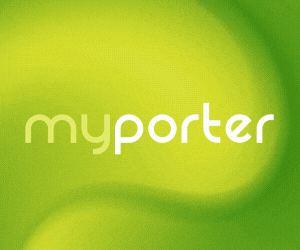Wrightington, Wigan and Leigh (WWL) NHS Foundation Trust was a finalist in the HEFMA 2019 awards for its forward-thinking and innovative energy project. HEFMA finds out more.
WWL currently employs approximately 5,000 staff with 750 inpatient beds and 300,000 outpatients per year. Across its five largest sites, WWL is a major energy consumer with an electrical energy consumption of around 14,700,000 kilowatt hours and associated CO2 output of 5,230 tonnes.
Since 2007, WWL has sought to minimise its impact on the environment through its Carbon Management Implementation Plan (CMIP), and more recently has worked on numerous schemes with Salix loan-supported funding relating to boiler flue heat recovery and economisers, multiple CHP installations and joining up of heating circuits for more effective heat distribution management at the Royal Albert Edward Infirmary RAEI site.
In 2007, it implemented a number of schemes at Wrightington, Leigh Infirmary and The Thomas Linacre Centre (TLC) related to lighting. However, lighting technology has vastly improved in the years since, so WWL began to thoroughly investigate a more advanced, technologically-sound solution for lighting control. It turned to Enlighted (a Siemens company), which, in addition to providing energy efficiency from LED light provision and increased controls, utilises the Internet of Things (IoT) with the benefits of space utilisation and asset tracking.
Enlighted was awarded a Single Supplier National Framework Agreement for the provision of Smart Building Solutions using the IoT via a Countess of Chester Hospital (COCH) framework for monitoring and control of energy usage, building occupancy and visibility of assets. This provided WWL with a fully compliant route to procure the Enlighted solution.
The project details
Estates and Facilities, Energy and Environmental Manager Mark Hogan and Estates and Facilities, Project and Business Development Manager Chris Murphy worked to replace 75 fluorescent fixtures and ballasts with 48 integrated LED fixtures and sensors as a pilot in their own office – WWL’s estates and facilities headquarters in Buckingham Row. This provided proof of concept and enabled them to plan the roll out to WWL’s clinical areas.
Through data obtained via sub-meters before and after installation, WWL established that the energy efficiencies achieved were of the order of 90% total savings relating to lighting – 50% of this via the introduction of the LED light fittings as replacements for relatively old T8 and T12 fittings, and 40% via the integration of the Enlighted smart sensors and controls.
The next step was to prove the concept in a clinical environment. The TLC - a dedicated outpatient centre in Wigan Town Centre - was chosen for this, as it is a relatively small, manageable site (4,500 sqm). The TLC, a grade 2 listed former grammar school which was fully refurbished by WWL between 2000 and 2002, present its own challenges. These were mostly concerning sensor coverage due to the thickness of the walls and complicated internal layouts due to the nature of the building. After subsequent three-monthly and six-monthly assessments, and production and sign-off of the appropriate business case, the installation at the TLC commenced in mid-October 2018 through January 2019.
904 fluorescent fixtures within the existing lighting infrastructure were replaced with 612 low wattage, highly efficient LED fixtures, equipped with Enlighted smart controls. Most of the older fixtures were high output T8s of high-energy consumption.
The Enlighted sensors were pre-installed offsite into the LEDs with the fixtures arriving as plug-and-play replacements for fixtures already in place within ceiling grids throughout most of the site. This enabled WWL to minimise disruption and time onsite within a busy outpatients area, adopting a staggered approach so as not to disrupt the running of the facility – which sees 96 consultant-led clinics per week, treating over 100,000 patients per annum.
Key challenges
• In specialist examination rooms consultants were required to measure test results at very low residual light level. The flexibility of the Enlighted system allowed the team to install low output downlighters with switches for specific “scene setup” for multiple usage within the rooms.
• Staff acceptance. Busy environments mean the working conditions for staff at the TLC are incredibly important. The adaptability of the system confirmed Enlighted was able to ensure each employee was happy with their surroundings.
Benefits
• Ease of implementation
• Cost effective solution with a sub five-year ROI
• Ability to be funded via Salix interest-free loan
• Highly intelligent and advanced sensors making control decisions locally at each fixture, adjusting light levels via:
Daylight Harvesting - The sensors adjust light levels as natural outside light changes the need for artificial/overhead light
Motion sensing - During pre-determined operational hours, Enlighted lamp fixtures within unoccupied areas idle from zero to 10% luminosity until “human-specific” motion is detected
Digital PIR sensing - The sensors are designed to ignore other heat producing items, such as printers and computers or changes in the environment produced by HVAC systems.
The product can adjust the light level based on the task. Previously, if staff required less light in their environment, they may have turned lights off and utilised desk lamps. As a result of installation, more reliable, even-lighting levels could be achieved to enable improved patient and working environments. WWL has dramatically reduced its electrical energy spend, whilst increasing the comfort of building users in the process.
The business case highlights the system installed at the TLC will save WWL over £30,000 in operational energy spend per year, circa £2,000 in associated CO2 emission costs and over 300 hours of maintenance time (across the 10-year guaranteed life cycle) because light fittings will not need to be changed.
Next Steps
Successful implementation of the lighting controls enabled the next stage of the programme in terms of the use of the wider Enlighted Applications – Space (space utilisation assessment software) and Where (asset tracking software).
The first application for Space is up and running. The Space application generates data that is displayed visually about usage of different areas of the building. It solves many different challenges associated with the use of the TLC. It allows WWL to visualise and report on the utilisation of the buildings in a way never before thought possible and includes various visualisation tools including motion trails, motion animation and time series, in addition to reports generated on different sections of the centre to measure utilisation, occupancy, and vacancy.
It’s too early to see the true benefits from the Space modelling as data needs to be established and verified, but the opportunities are endless in terms of awareness of space usage and utilisation, therefore planning for future developments.
As WWL plans for expansion and development into the management of community services, Enlighted is providing the Trust with a unique opportunity to reliably exploit data obtained regarding space utilisation to more effectively manage its existing building stock within its portfolio. Asset tracking is also being introduced, beginning with medical equipment, thus improving significantly the ability and efficiency of managing such equipment.
This is a pioneering project for the UK - Enlighted has installed such technology in many hospitals in the USA, this is the first installation of such revolutionary technology in a hospital outside of North America.
With the project now complete, the team is looking at moving forward with the next site at Wigan (RAEI) and hopes to roll out this technology across the entire Trust in the coming years as the benefits of implementation are confirmed.









